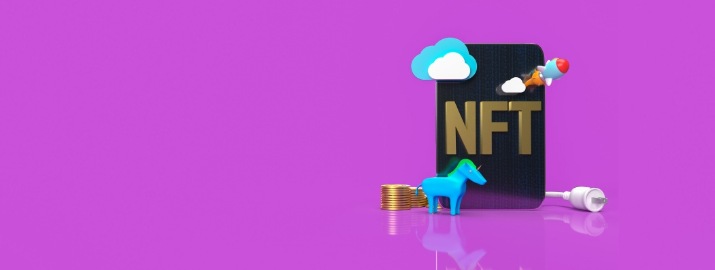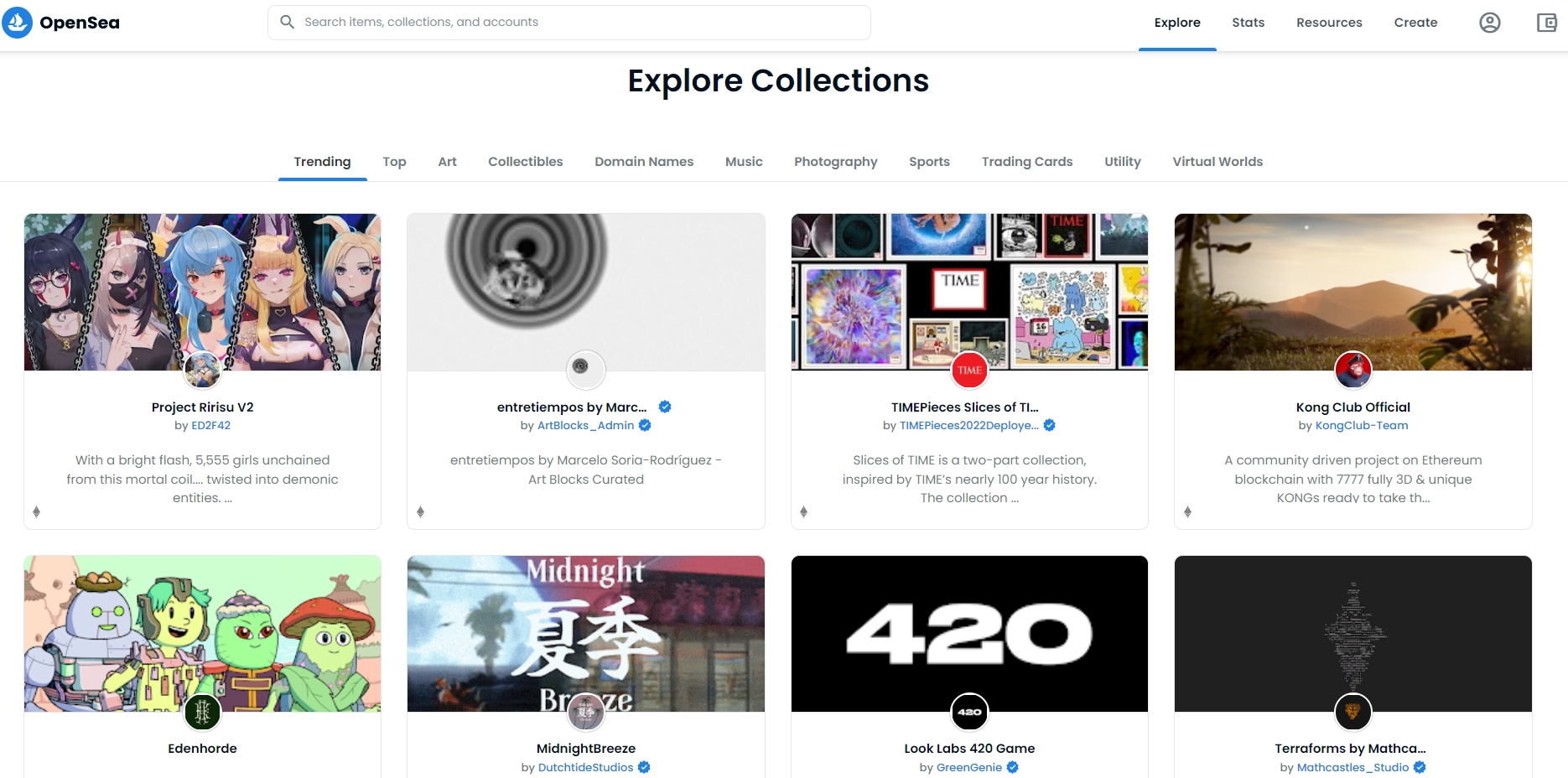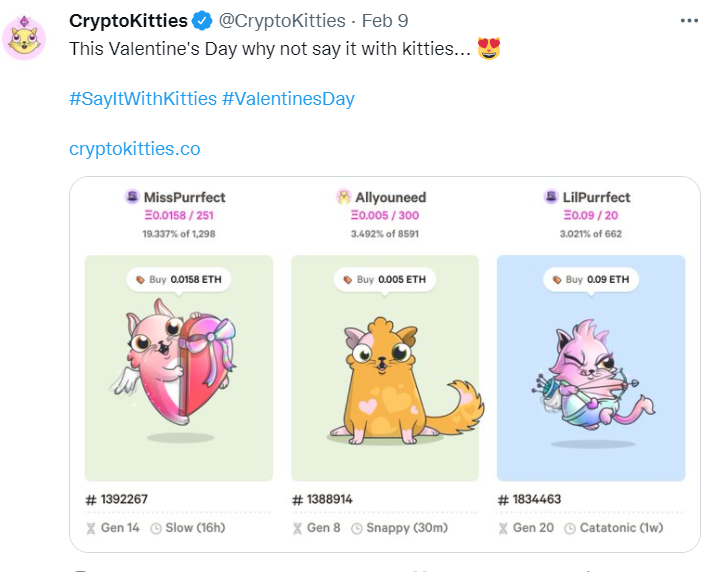
What Is NFT: The Ultimate Guide on Non-Fungible Tokens
What is NFT? This is a question that many people have been asking lately, as this new type of digital token is gaining popularity. Meanwhile, non-fungible tokens (NFTs) are revolutionizing the way we think about digital assets.
In this blog post, we will discuss what NFTs are, how they work, and why they are important. We will also cover some of the key benefits of using an NFT coin in your business. Moreover, we will cover some examples of NFTs to help you understand them better. Lastly, we’ll take a look at crypto NFT.
So, if you’re interested in learning more about this exciting new technology, keep reading.
What You’ll Find in This Article
What Is NFT?
In this chapter, you can learn NFT meaning and NFT definition. NFT stands for Non-Fungible Token. NFTs are unique digital assets that cannot be duplicated or exchanged like traditional currencies, such as Bitcoin and Ethereum. This means, unlike cryptocurrencies, non fungible tokens cannot be exchanged or traded at equivalency. But you can use them to create ownership of real-world objects, including artworks or sports cards.

NFTs are digital tokens that are unique. They can’t be interchangeable which means that each NFT has the characteristics that set it apart from all other tokens. NFTs are often used to represent unique assets, such as collectibles or digital art.
That is, they represent particular ownership of an asset, such as land, intellectual property, art, or even another NFT. NFTs can be stored on blockchains and used to verify the transfer of digital assets between users.
NFTs can have different attributes from other NFTs in the same category; however, they share some similarities too (e.g., each NFT coin represents something). NFTs are cryptographic assets built on a blockchain with metadata and unique identification codes that separate them from each other.
Their unique ideation and concept make them viable for several use cases, including but not limited to artwork and real estate. In simple terms, NFTs can be used to digitally represent physical assets. As they are constructed using blockchain technology, intermediaries and third parties are no longer needed when doing trade. That is, NFTs can help connect artists with prospective audiences. As blockchains are involved, NFTs can also be used for identity management. As a result, transactions can be simplified, and new markets can be created.
At the moment, the NFT market is centered on collectibles, which include rarities, sports cards, and artwork. For example, NBA Top Shot is a popular NFT space where users can collect the tokenized NBA moments in the form of digital cards. These non-fungible tokenized sports cards can be worth millions of dollars.
So, if you got the answer for what is an NFT question, we can move on to types of NFT sections.
NFT Examples and Types
NFTs can be classified into three main types:
- NFTs that represent real-world assets include artworks and collectibles
- NFTs for creating virtual objects may include in-game items or digital assets
- NFTs for identity management can be used, for example, to verify the age of a person
These tokens are used to track and oversee the transfer of physical objects between users. For example, an NFT can represent ownership of a car or land. NFTs that are used to create virtual objects include in-game items and digital assets, such as crypto kitties. NFTs for identity management involves the verification of age, education level, or other personal information.
The following are the commonly associated types of nonfungible tokens:
Digital Art
NFTs that represent digital art, including but not limited to drawings and paintings, are part of high-profile auctions where NFTs have been sold for millions of dollars. NFT-based artworks are usually created using platforms such as Nifty Gateway and SuperRare.
“Merge,” an artwork by a digital artist, graphic designer, and programmer named Pak, is the most expensive non fungible token that is priced at $91.8 million. Another popular artwork is the “Everydays: the First 5000 Days,” created by Mike Joseph Winkelmann, which was sold for $69.3 million in an auction in 2021.

Generative art is considered the next step in NFT-based art. These artworks are created by assembling different picture components and using them in different combinations.
Games
CryptoKitties, a game built on the Ethereum blockchain, is one of the most popular NFT games. The game allows users to breed and collect digital cats. The value of some CryptoKitties has reached $100,000.

Another example of an NFT game is Gods Unchained, which is based on the NFT standard ERC-1155. The NFT game allows players to purchase digital assets, such as cards that can be used in a trading card game with other users.
Essentially, these games represent in-game assets that include virtual land and plot that can be bought and sold. NFTs are used to represent these assets, which means they can be traded across NFT marketplaces.
NFTs have immense potential to revolutionize the real estate industry. In this case, NFTs can record the ownership of tangible assets such as houses and land. The NFT market has the potential to create a more efficient and transparent real estate industry.
Music
NFTs can also represent music. For example, in 2019, NFT startup Audius raised $55 million in a Series A funding round. The company uses NFTs to track and distribute royalties to artists.
Tokenized Music is another project that uses NFTs to represent music ownership. The project allows users to purchase NFTs that will entitle them to the ownership of music.
Another NFT-based platform, Yellow Heart, sends NFTs to fans when artists’ songs are played on platforms such as Spotify and Apple Music. The NFT is sent directly through these platforms using blockchain technology.
In May 2021, Kings of Leon became the first band to release an NFT album. The album, “Walls,” is available on the Ethereum blockchain and allows users to purchase NFTs that represent individual tracks or the entire album.
Film
In 2019, NFT startup TaTaTu raised $575 million in a Series C funding round. The company plans to use NFTs to represent ownership of films and TV shows.
As NFTs become more popular, it is likely that they will be used to represent the ownership of movies and TV shows. This would allow users to purchase NFTs that would give them access to the content.
In fact, in 2018, the limited-edition Deadpool 2 digital posters were released on exchanges like OpenSea and the GFT by the 20th Century Fox. The purpose of this stint was to promote the movie.
Let’s move to the next section: What is NFT crypto?
How Is NFT Different From Crypto?
What is an NFT? NFTs are non fungible tokens. While they are somewhat similar to cryptocurrencies as they use the same programming as Bitcoin and Ethereum, NFT crypto cannot be traded or exchanged for one another. This is where the similarities end. Cryptocurrencies, and even fiat currencies, are fungible. That is, you can exchange one dollar for another one dollar or one BTC for another BTC.
When it comes to non fungible tokens, they come with digital signatures, which means that NFTs are unique. The NFTs cannot be traded for one another, and no entity can claim them. These tokens store valuable data that represents ownership of goods or services. NFTs protect owners through the blockchain network.
NFT crypto or NFT coin can be used in many ways, including representing art pieces, music ownership, and even real estate.
According to a report by Bloomberg News, NFT transactions had reached $250 million during the first quarter of 2021 alone. Dapper Labs’ CryptoKitties NFT game has made $36.61 million in NFT sales since it was launched in 2017.
Crypto NFT is likely to become even more popular, especially considering some NFT-based platforms have received huge funding rounds recently.
One of the most prominent NFT players is Dapper Labs, which has raised a total of $62.75 million in NFT funding rounds to date. Nifty Gateway is another prominent NFT platform that has received a total of $52 million in funding so far.
Cryptocurrency for Beginners
Why Would Someone Buy NFT?
NFTs have a wide range of use cases and can be used to represent anything that has value. NFTs are unique in the sense that they cannot be traded for other NFTs, which means their value is not diluted.
This makes them perfect for representing ownership of assets. For example, if someone purchases an NFT that represents ownership of a piece of art, they can sell the NFT to someone else. NFTs are secured on the blockchain network, so there is no risk involved when purchasing NFT assets.
This means NFTs provide value for investors who want to buy and sell digital assets. NFT-based games are also becoming more popular. NFTs can be used to represent in-game assets, such as weapons or rare items that players can buy and sell for real money. NFTs have the potential to revolutionize gaming with their unique capabilities.
Other NFT use cases include trading cards on blockchain networks like Ethereum or even representing ownership of collectible items like cars. NFTs have the potential to be used in a variety of industries, and their popularity is only going to continue to grow.
With that being said, the following are some benefits of owing non-fungible tokens:
- Scarcity: NFTs are not created equal, and each one is unique. This means that NFTs cannot be replicated or reproduced, which gives them a certain level of scarcity. This makes them more valuable than other digital assets and can provide an investment opportunity for those looking to buy NFTs. Most importantly, NFTs cannot be counterfeited, which gives them an edge over other digital assets.
- Security: NFTs are stored on the blockchain network, which makes them secure and tamper-proof. This means that NFT owners can rest assured their tokens are safe and will not be stolen or compromised. Blockchain network provides a high level of security for NFTs and can be used to verify ownership.
- Portability: NFTs are digital assets, which means they can be stored and transferred easily. NFT owners can store their tokens in a secure wallet and access them from anywhere in the world. This makes NFTs highly portable and easy to use.
- Versatility: NFTs have a wide range of use cases and can be used to represent anything that has value. NFTs are unique in the sense that they cannot be traded for other NFTs, which means their value is not diluted. This makes them perfect for representing ownership of assets. NFT-based games are also becoming more popular. NFTs can be used to represent in-game assets, such as weapons or rare items that players can buy and sell for real money.
- Collectability: NFTs can be used to represent a variety of physical and digital assets, which makes them perfect for collectors. NFT owners can buy NFTs that represent their favorite items or assets and store them in their wallets. This makes NFTs highly collectible and easy to trade.
NFT Timeline
The following is a timeline of NFTs and their development:
-
2010
Item content. Click the edit button to change this text. -
2018
NFTs become more popular with the release of Dapper Labs' CryptoKitties
-
2019
NFTs continue to grow in popularity, with several high-profile NFT sales taking place (such as Nyan Cat NFT sale for $500,000)
-
2020
NFTs gain mainstream attention with the release of Ethereum's ERC-1155 standard and other developments like NBA Top Shot
-
2021
NFTs continue to grow in popularity, with high-profile NFTs being used in a variety of industries. NFTs have become the preferred method of representing digital assets and ownership
What Is NFT Art?
An NFT is a digital asset that cannot be touched, yet it may be owned. An NFT can be any digital file, including artwork, articles, music, and even memes. NFT art is a technique of classifying digital artworks that allow creators to profit from their work.
Conclusion
NFTs are a unique type of digital asset that provides a wide range of benefits for investors and owners. NFTs are secure, portable, and versatile, making them perfect for representing ownership of assets. They have the potential to revolutionize a variety of industries, and their popularity is only going to continue to grow.
Hope our article has helped you to understand the NFT definition and NFTs meaning. If you have any questions, please feel free to leave your comments on our growing forum.
FAQ
What is NFT meaning?
A non-fungible token is a non-transferable unit of data that may be sold on a blockchain.
What are NFTs examples?
What is a NFT and NFTs examples are common questions among the people. NFTs examples might include furniture, digital and non-digital collectibles, domain names, or tickets.
What is a non fungible token?
NFTs, or non-fungible tokens, are digital assets tied to the blockchain.
